Author: Main Maker
-
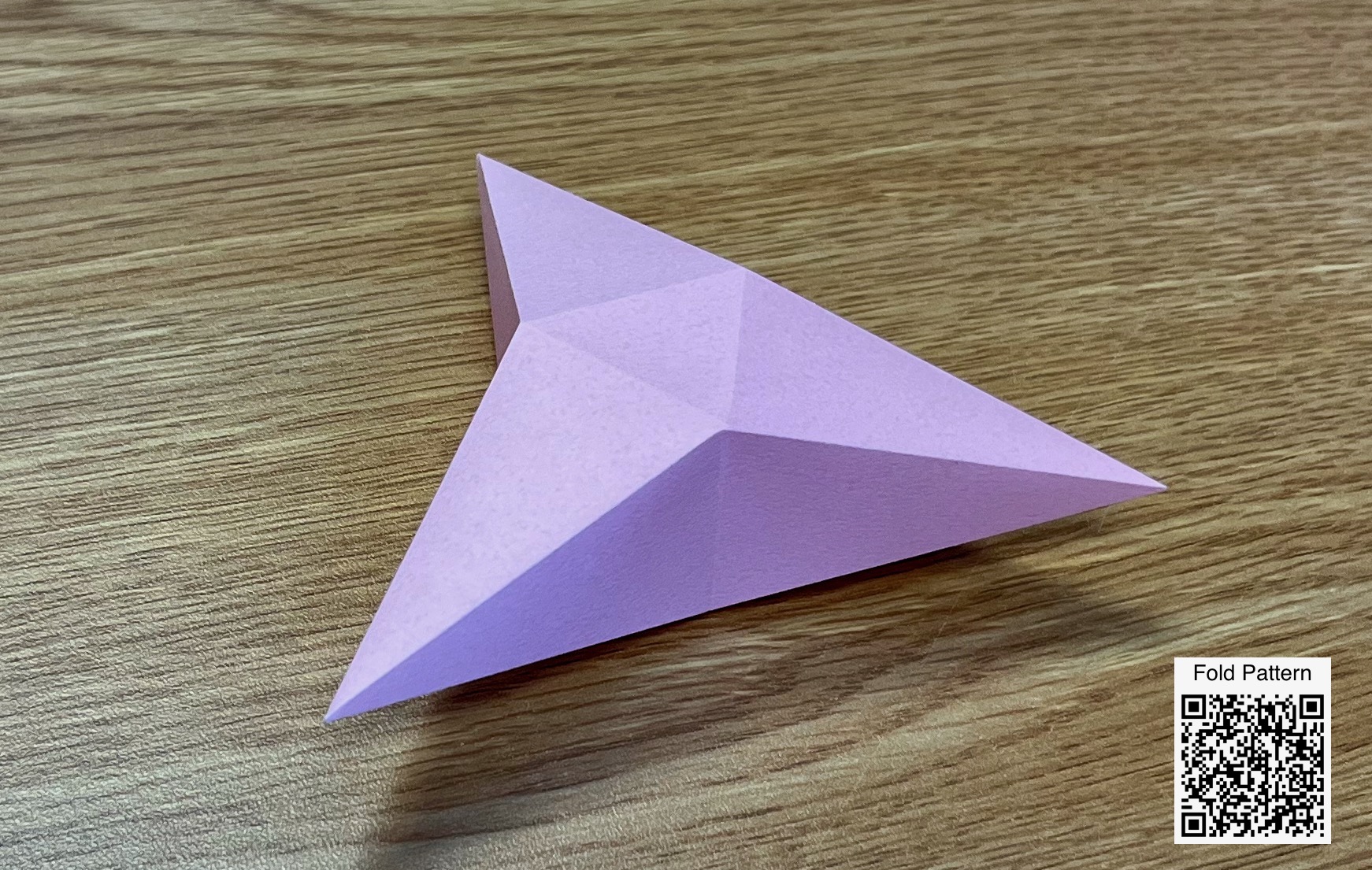
Stepan Paul (Square-elevated triangular prism)
Three Points of Defect, folded paper [14 F, 21 E, 9 V] The “angle defect” of a vertex of a polyhedron is 360 degrees minus the sum of the angles of the faces meeting at that vertex. For example, each vertex of a cube has angle defect 90 degrees, since the three right angles meeting…
-
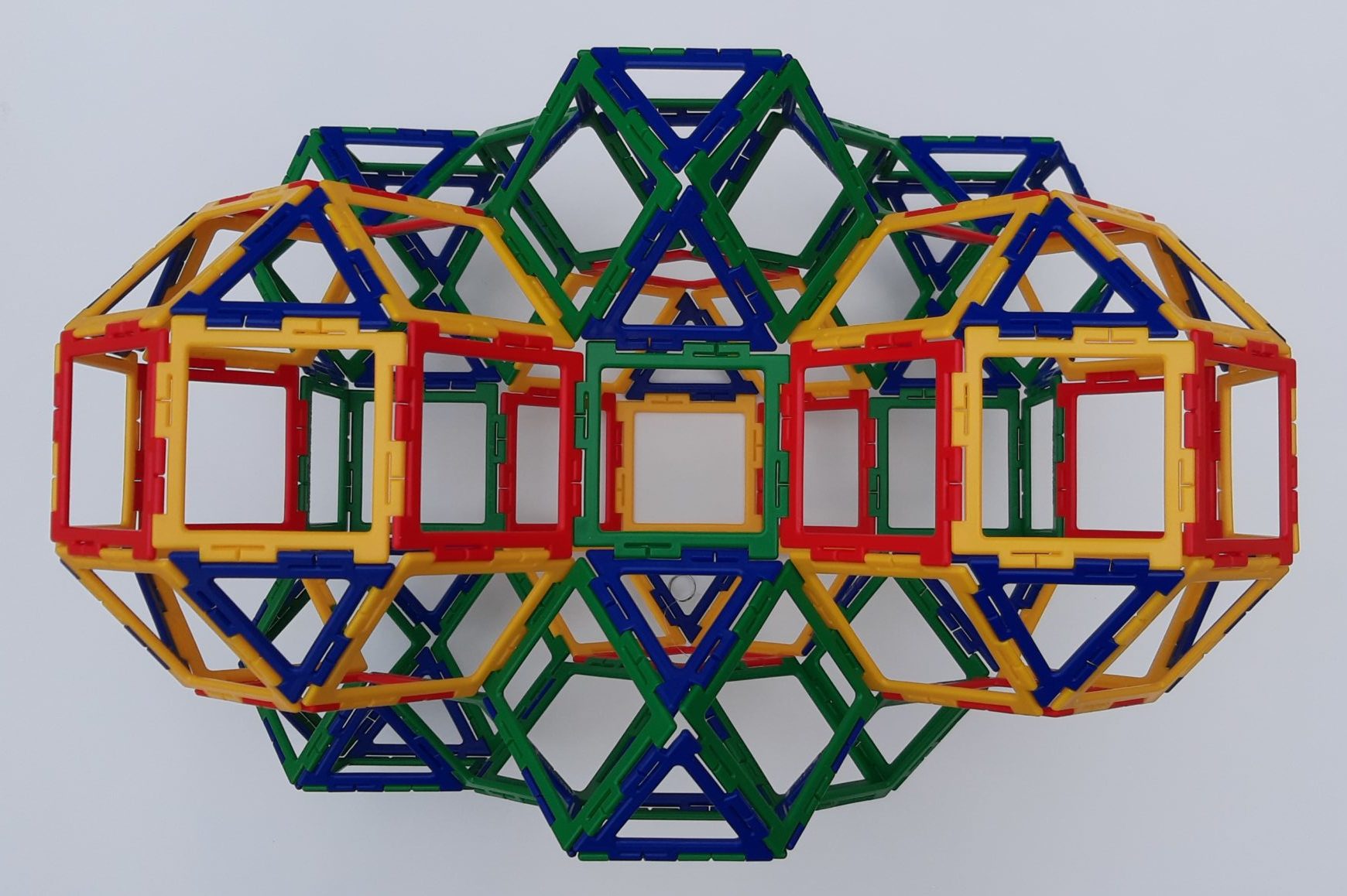
Polydron (Compound of 3 rhombicuboctahedra, 5 cuboctahedra, 6 cubes)
Untitled, injection-molded plastic. Contributed by Studio Infinity. [108 F, 196 E, 90 V] There are many more combinations of symmmetric solids that can fill space with no gaps or overlaps than just the familiar rectangular solids. This construction of Polydron, one of the oldest commercially-produced systems for constructing polyhedra, illustrates one such combination, consisting of…
-
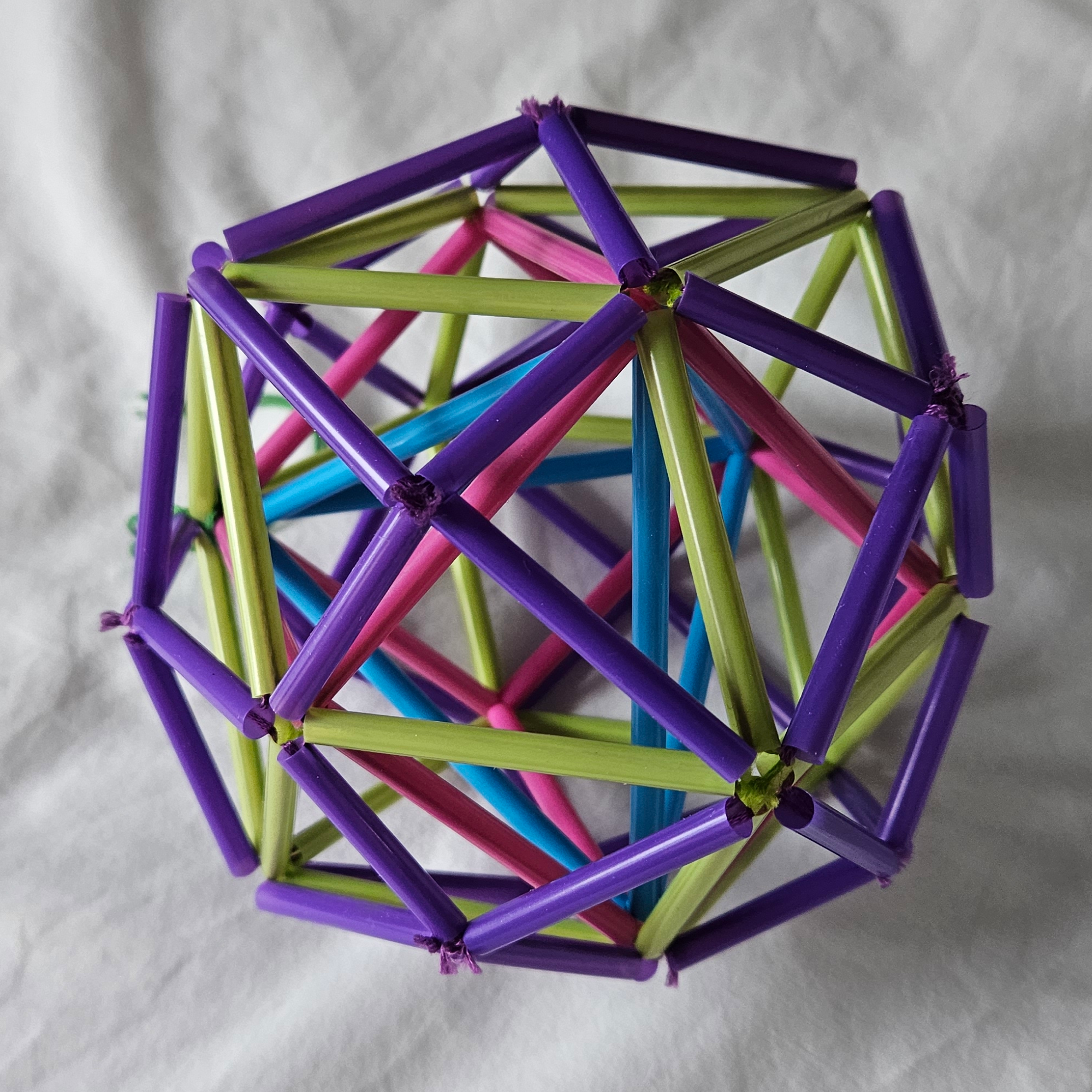
Nick Rauh (Triangulated deltoidal icositetrahedron)
Elevation, plastic drinking straws and embroidery floss [48 F, 72 E, 26 V] This structure starts with a blue tetrahedron and then at each stage elevates it, which is to say, adds pyramids onto each external surface of the previous stage. In this case, the height of each of the pyramids is chosen to make…
-
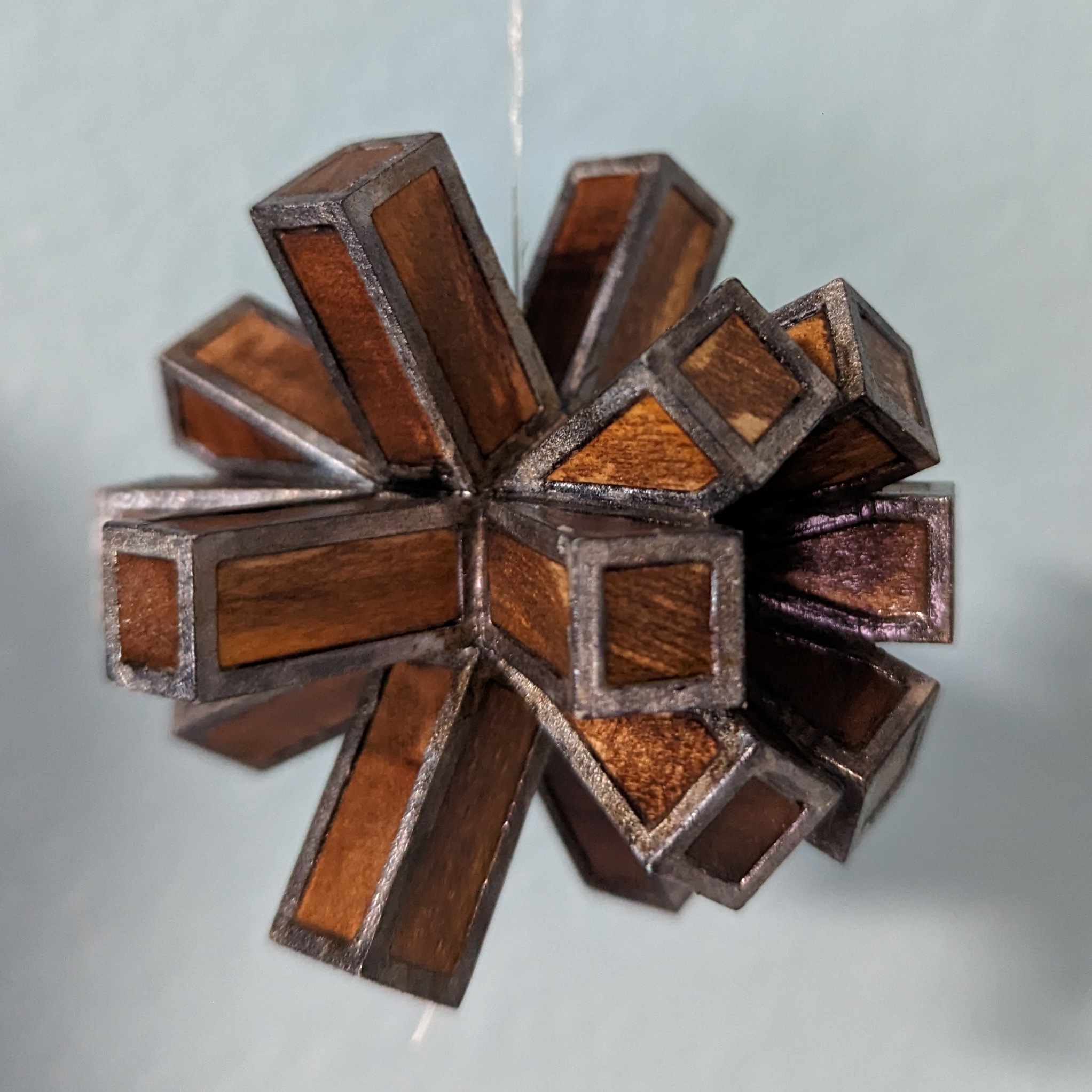
Matthew Reeves (Compound of nine prisms)
9 Prisms, Polylactic acid plastic, wood, and acrylic paint [90 F, 186 E, 98 V] This complex form is created by the superposition of nine differently rotated copies of the same square prism, one of the simplest and most familiar polyhedra.
-
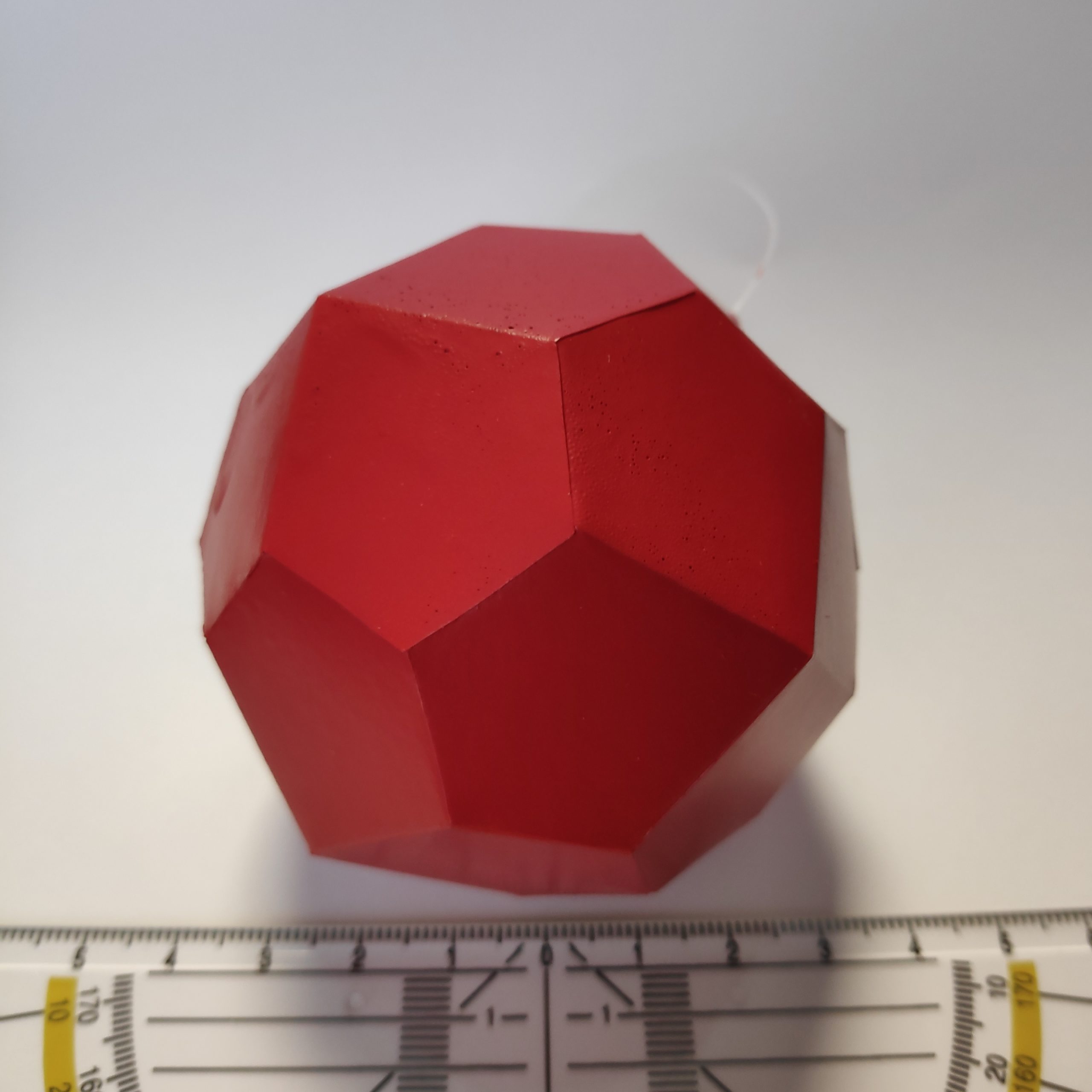
Moritz Seebode (Pentagonal icositetrahedron)
Untitled, rubberized cardstock [24 F, 60 E, 38 V] This polyhedron is one of 13 shapes known as the Catalan solids: polyhedra with identical, interchangeable faces that bear a special relationship with the Archimedean solids called “duality.” This particular one is the dual of the snub cube, meaning that it has one vertex for each…
-
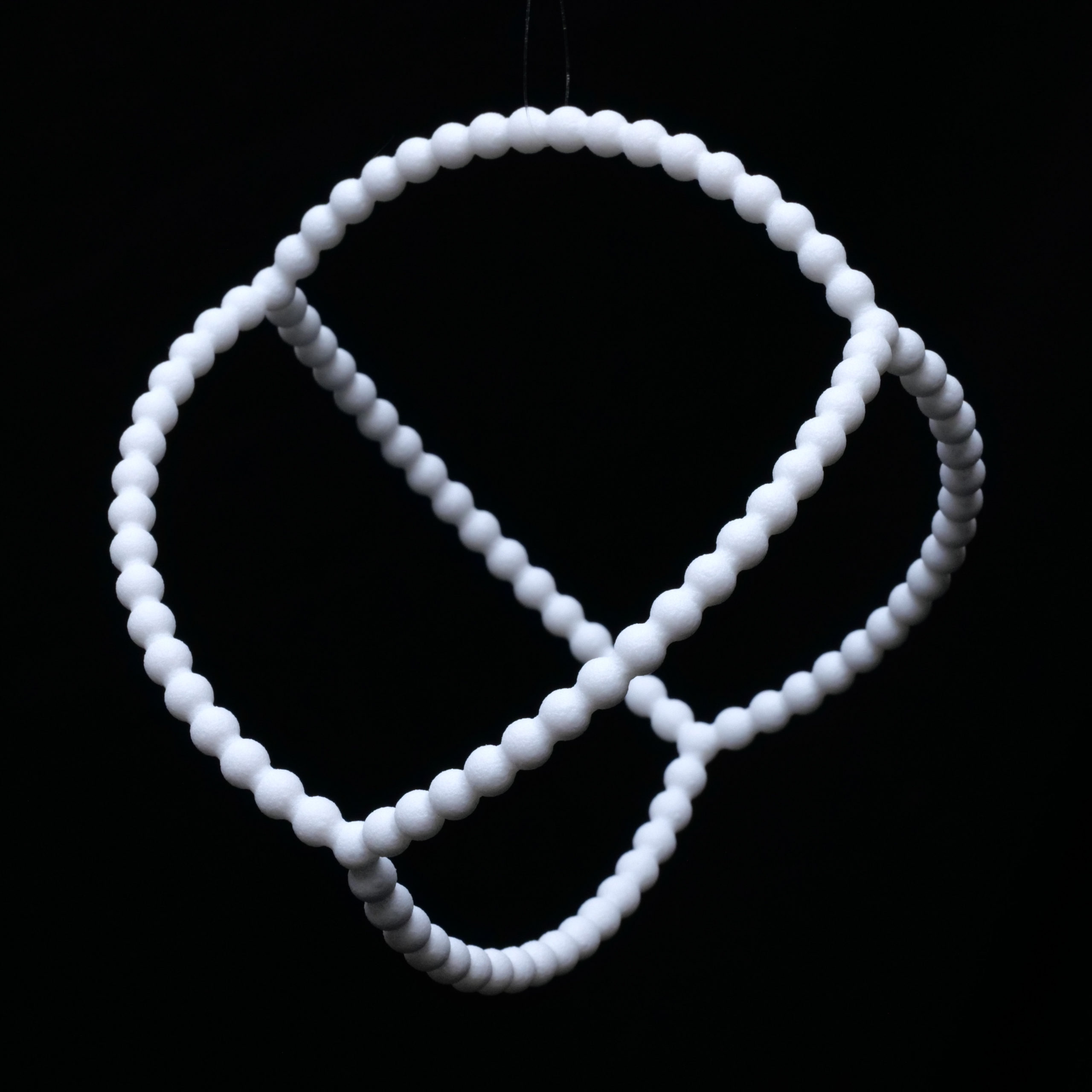
Henry Segerman (Vertex-augmented tetrahedron)
106-108-4 Topological Polyhedron, 3D-printed nylon [4 F, 108 E, 106 V] This sculpture illustrates a subdivision of a sphere into four parts. With the correct interpretation of what vertices, edges, and faces are, we can think of this as a “topological” polyhedron where each part of the subdivision is a face with 54 sides. Most…
-
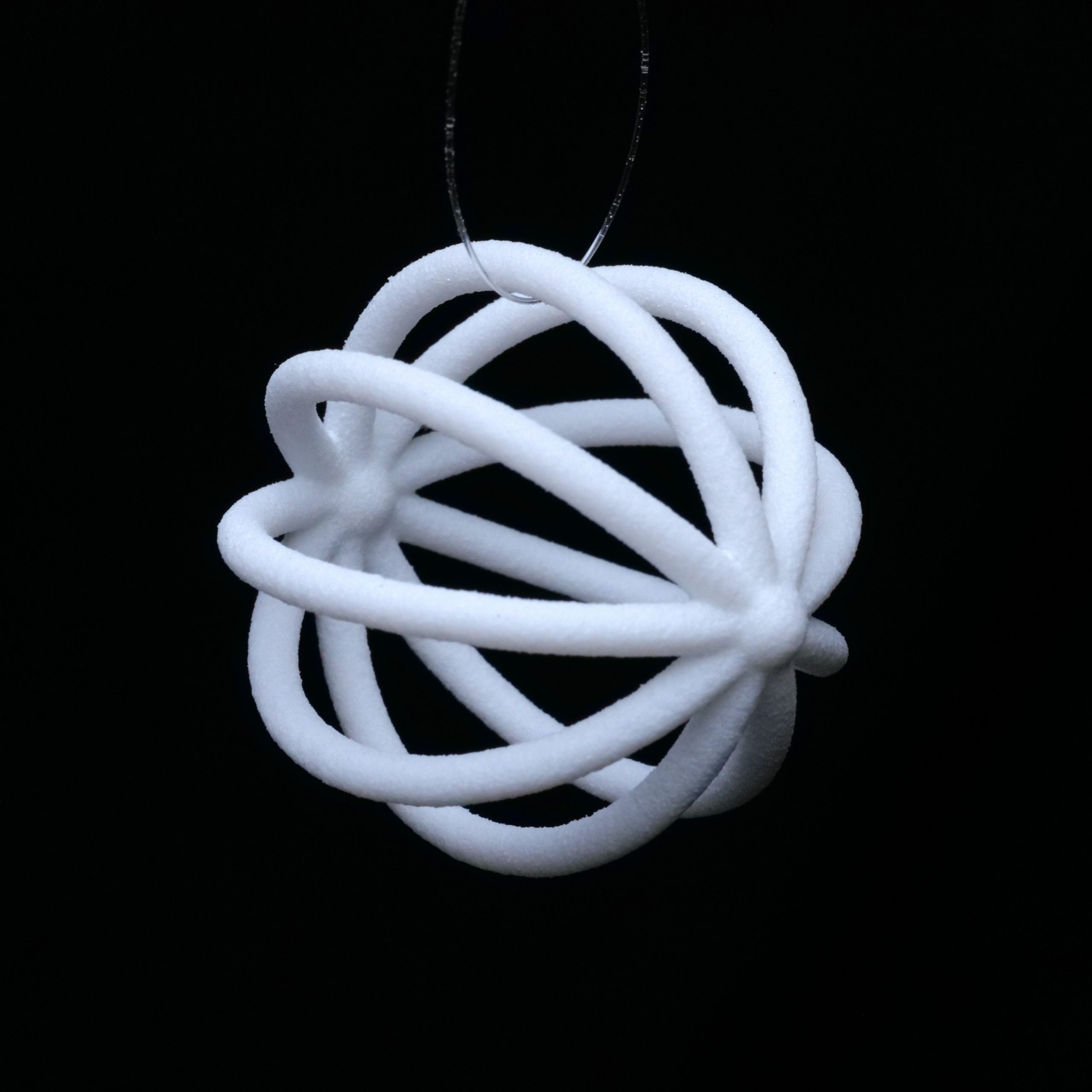
Henry Segerman (Enneagonal hosohedron)
2-9-9 Topological Polyhedron, 3D-printed nylon. [9 F, 9 E, 2 V] This sculpture illustrates a subdivision of a sphere into nine bigons. A bigon is a polygon with only two sides. This is impossible for a polygon with straight sides living in the plane, but is no problem if we take a more topological version…
-
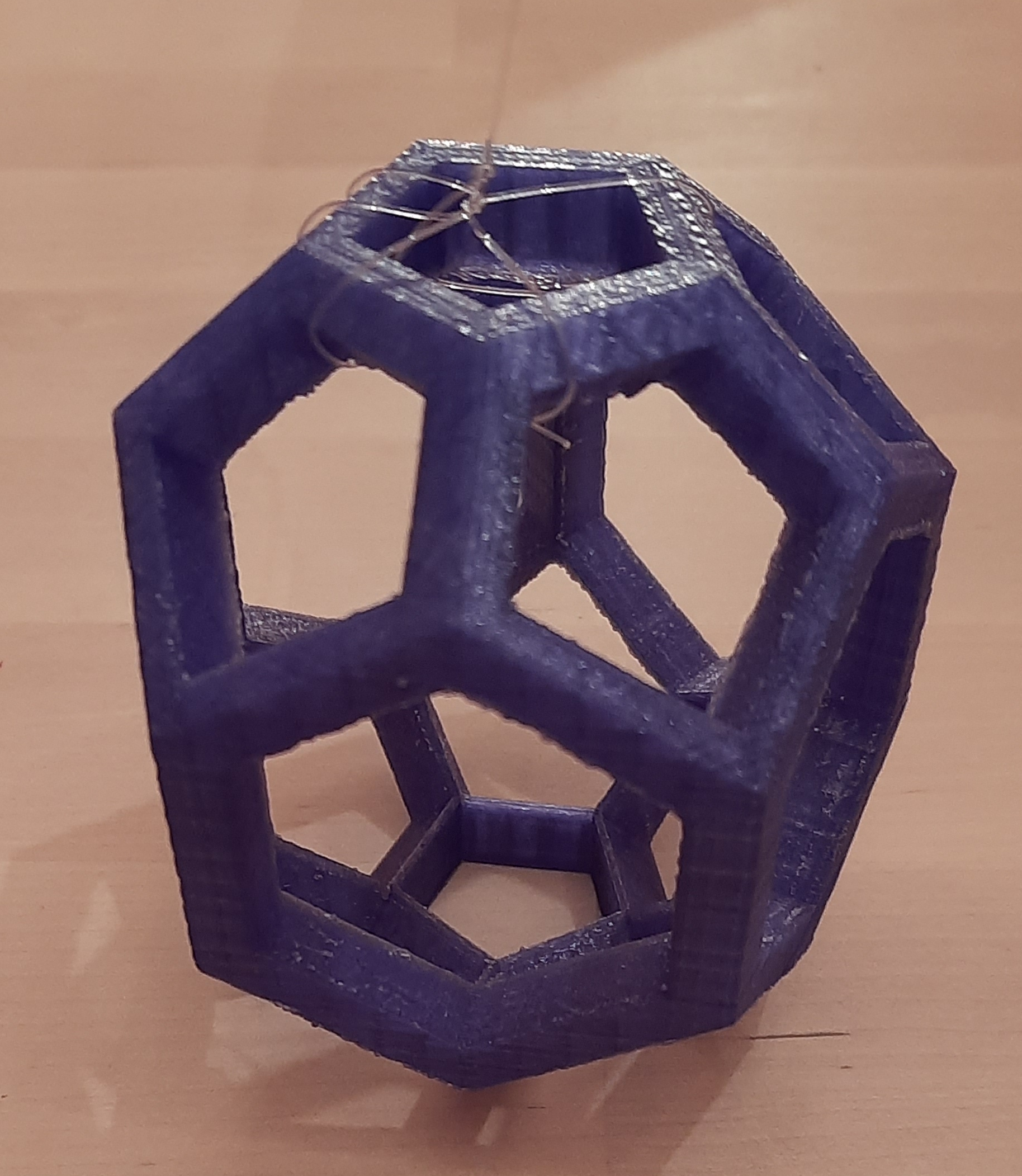
shihhsit (Elongated dodecahedron)
Untitled, 3D-printed polyethylene plastic. Contributed by Studio Infinity. [17 F, 45 E, 30 V] This solid derives from another shape with twelve regular pentagons for faces. You take such a regular dodecahedron and split it into identical halves along a zig-zag path around its “equator.” Then pull them apart and twist one of the pieces…
-
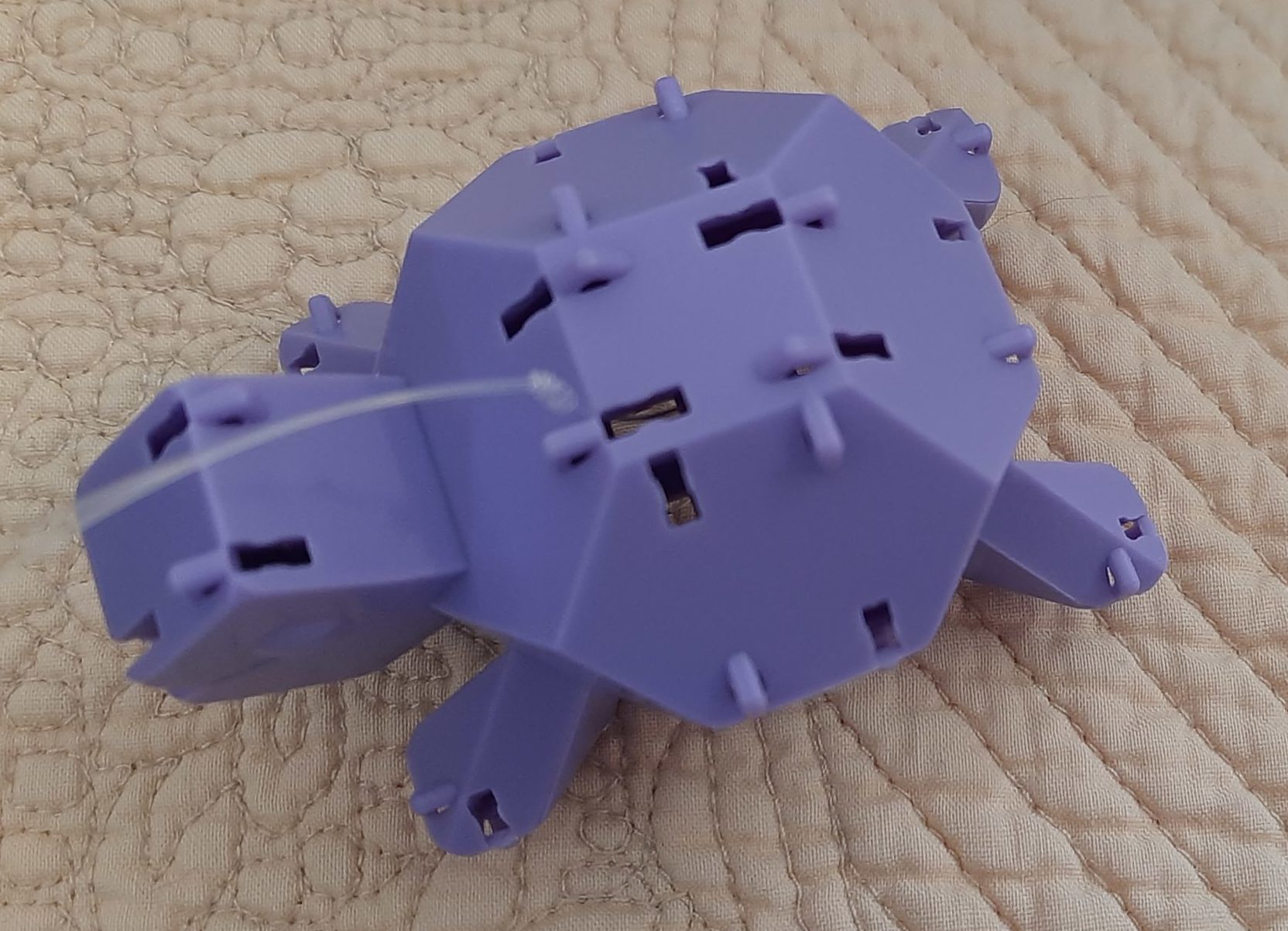
Jonathan Stapleton (Irregular pentacontaheptahedron)
Reptangle, injection-molded plastic. Contributed by Studio Infinity. [57 F, 121 E, 66 V] This fanciful polyhedral design (instances of which can snap together in multiple ways) was marketed as “Reptangles: Turtles That Snap” by the Fat Brain Toy Company.
-
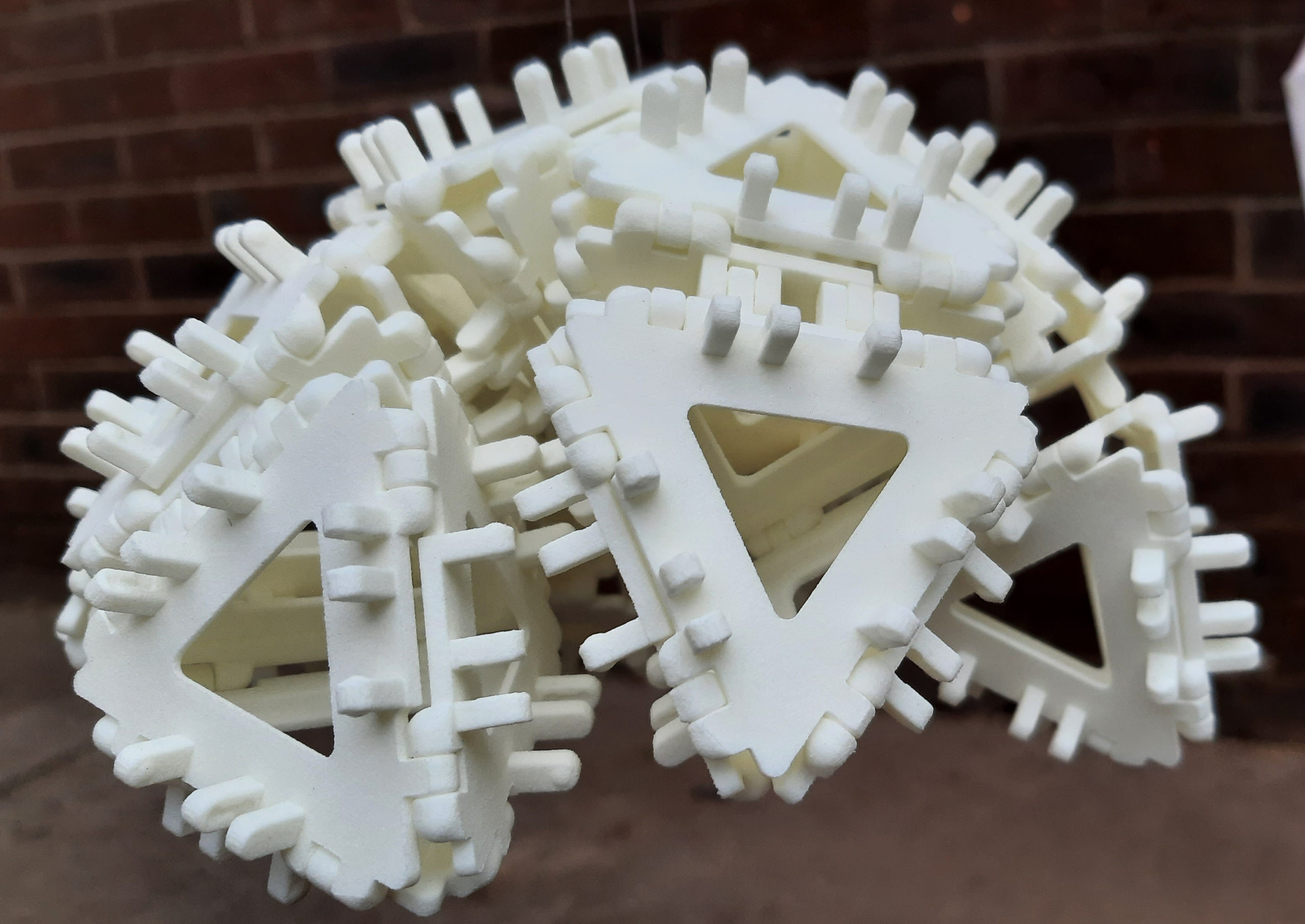
Studio Infinity (Compound of thirteen regular tetrahedra)
Disjointed Beetle, 3D-printed nylon [28 F, 42 E, 16 V] Aristotle hypothesized in the fourth century BCE that identical regular tetrahedra could fill all of space with no gaps or overlaps. In reality, as proven roughly two millennia later, it is not even possible to make a loop of regular tetrahedra connected face to face.…